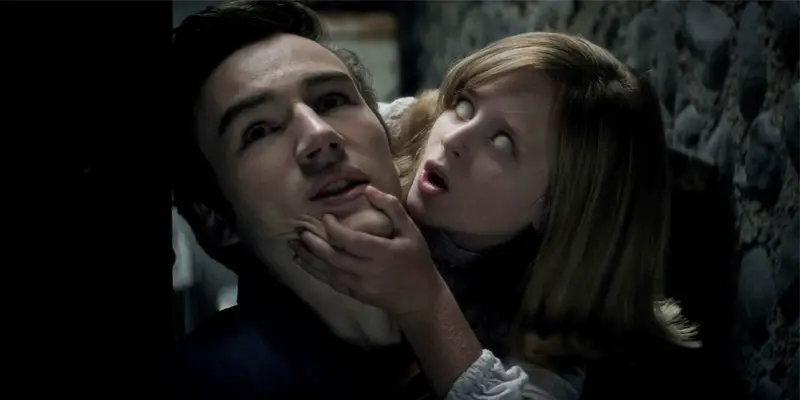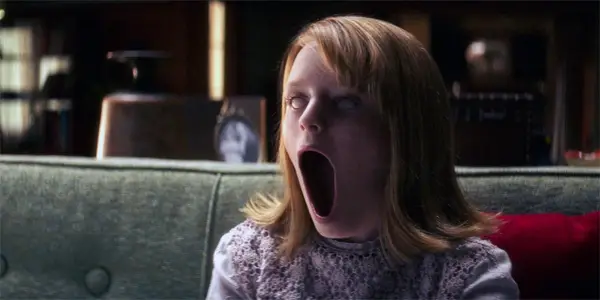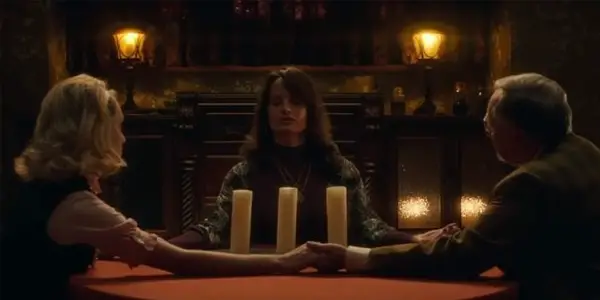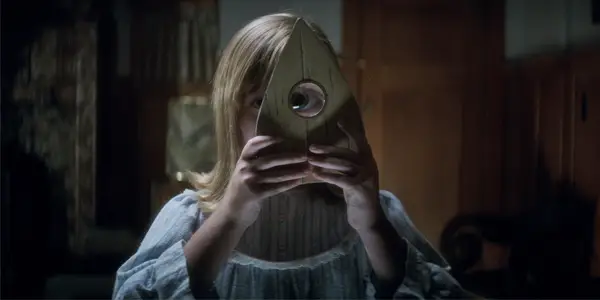OUIJA: ORIGIN OF EVIL: Between Two Worlds

Alex is a 28 year-old West Australian who has a…
Horror is in an extremely interesting place at the moment. Thanks to the rise of video-on-demand platforms and new technology, barriers between creator and distributor are disappearing, the amount of independently-made films are rising and the availability of these films is quite accessible. The trade-off of this is the problem of quantity over quality, which has meant that, much like the exploitation era of filmmaking in the 1970’s, every new or original film that is successful is followed with a string of derivative imitators, looking to cash in on genre recognition or fans looking to branch out on that particular subject matter.
On a large scale, the success of both The Conjuring films has meant the return of exorcism/haunted house films, with the horror fads before that being found footage, foreign films and remakes. As most exorcism films borrow from the king of all horror films – The Exorcist – there’s a certain number of tropes that you can expect. The target is usually a young female, frequent images of body distortion, an exposition dump on who the demon is, excessive bodily fluids, and a marketing campaign that purports that the film is “based on a true story”. With that in mind, let’s look at Mike Flanagan’s Ouija prequel, Ouija: Origin of Evil.
The Rare Prequel Reboot
Blumhouse Production’s annual horror film for the Halloween period, Ouija: Origin of Evil is a soft reboot of sorts. Much like the Blumhouse hit, The Purge, everyone agreed that the premise of the original Ouija film was a great idea for an original horror movie. Apart from the Witchboard franchise from the 1980’s, the idea of a Ouija board being used for its actual supernatural ways is a terrific starting point, an idea that can be diverted into any number of scary outcomes. Despite being a financial success, though, it was agreed that the original Ouija was quite substandard, just some generic fodder that merely existed in order to make money, lacking in any passion or intelligence.

Mike Flanagan seems like a perfect pick for a director to essentially reboot the series, being part of the new wave of horror film directors who are currently dominating the genre’s landscape, with other names including Adam Wingard, Jim Mickle, James Wan and Ti West. Despite Flanagan’s good intentions, sadly Ouija: Origin of Evil mostly feels like another derivative exorcism film, some good ideas drowned out by the amount of overused tropes and predictable narrative decisions.
Set in the innocent time of 1967 (another period-set horror film), widow Alice Zander (Elizabeth Reaser) runs a fake séance scam in her living room in order to make ends meet, alongside her two young daughters, Doris and Paulina (Lulu Wilson and Annalise Basso). With the business slowly evaporating, Alice decides to introduce a Ouija board into her act.
As soon as the Ouija is initially used incorrectly by Alice, she awakens an evil spirit that decides to possess Doris, who starts to show signs of being able to talk to spirits, a talent that Alice decides to exploit to help her failing business. As Doris’ behaviour begins to grow worse, Alice, alongside her priest friend Father Tom (Henry Thomas), must confront the Ouija board and the spirits within in order to save her family.
Interchangeable Demons
In the same year as James Wan’s The Conjuring 2, which centred on a poor family where the youngest daughter was possessed by a demonic spirit, Ouija: Origin of Evil already feels way too similar. Although The Conjuring 2 focuses its material on the Warren couple and their relation to the haunting, Ouija uses its main horror concept to explore some more complex themes, such as grief, family relations and the shattering of childhood innocence, which was a refreshing attempt at thematic depth in a sea of empty, exploitative horror films that dominate the home market currently. That’s why its such a shame to see this material populated with so many predictable and generic elements, such as a reliance on jump scares, unoriginal visuals and a predictable narrative that hits the same beats as many films before it.

As seen in Flanagan’s previous works, he is not a director that has ever relied on these techniques before. Absentia, Oculus and Hush are three intelligent movies that build atmospheres and contain diverting plot-lines that shift in unpredictable fashions. Within Ouija we see the struggle for Flanagan to attempt to infuse his minimalistic style with a more audience-friendly, hurried storytelling that demands a quick jump scare or arresting visuals in order to maintain audience interaction, for those viewers who watch horror films purely for the unique experience rather than to engage with an interesting narrative. For every deconstruction of a trope that is introduced (the characters are surprisingly intelligent), an overused trope is brought in that prompts a sigh of disappointment when the film was on the verge of breaking these tired clichés.
Trying to Please Everyone
This clash of satisfying two different audiences is quite evident in the film’s narrative, one which uncharacteristically demands that its audience actually pay attention to the various plot machinations that go down, as opposed to being distracted by the unsettling visuals. The film’s plot is Flanagan’s most visible trademark in the film, a twisty and unpredictable tale that is quite similar to the director’s previous work in Absentia and Oculus.
Mainstream audiences may be confused by the complicated plot shifts, that are mainly dumped late in the third act after a lengthy ham-fisted exposition scene which brings back memories of the laughable Vincent D’Onofrio “Bughuul” scene from Sinister. An anti-climactic ending ends the plot on a graceful and understandable note, but not the most satisfying one to witness due to the amount of increasing tension leading up to the film’s composed resolution.

This is not to undermine Ouija‘s technical aspects at all. The cinematography, CGI effects and soundtrack are all satisfactory, even though they don’t elicit any extreme enthusiasm or overt praise. The film’s strongest aspect is in its acting, with the core five actors all performing quite well with no distractions or noticeably bad acting (a constant problem with the horror genre ever since its genesis).
Lulu Wilson especially is visibly creepy, playing the young possessed daughter with a mixture of childlike friendliness and bubbling maliciousness that never feels stilted or contrived. Despite a questionable amount of CGI distorting her performance as the film carries on (some of the film’s later disfigurements garner laughs more than chills), Lulu successfully sells the macabre child well, enough to distance herself from the stereotypical character as she has been written. Refreshingly so, you actually care about the characters in this film, given enough depth and pathos to warrant us to want them to succeed in their conquest against their demonic foes.
The Verdict
The ultimate problem with Ouija: Origin of Evil is how ultimately average the whole film ends up feeling. It’s a film which is competently made, acted well enough and with a narrative that attempts to explore some deep material and shift into some unpredictable directions. Yet, especially with the horror genre, this isn’t enough anymore, as a lack of memorable moments or original components makes the entire film feel completely forgettable, a disappointment coming from one of the more original new voices in the horror world.
Unfairly so, Ouija: Origin of Evil is a film that most people will dismiss on face value – lumping it in with the straight-to-VOD slog that is released on a weekly basis, not willing to attempt to build their own unique opinion on it. Even though it presents many of the tired clichés that you expect from a film like this, Flanagan attempts to beef up the material, demanding at least a view from horror audiences.
Die-hard viewers who are well-versed in the horror genre will pick up on the film’s predictable story-line and use of exorcist film tropes straight away, but Mike Flanagan’s efficient technical skills and ability to craft likable characters makes the film at least watchable, even though the lack of distinctive visuals or surprising moments might make Ouija‘s lasting impressions fade faster.
What do you think of the current 2016 horror line-up?
Ouija: Origin of Evil is playing in cinemas in the United States and the United Kingdom. Find international release dates here.
Does content like this matter to you?
Become a Member and support film journalism. Unlock access to all of Film Inquiry`s great articles. Join a community of like-minded readers who are passionate about cinema - get access to our private members Network, give back to independent filmmakers, and more.












